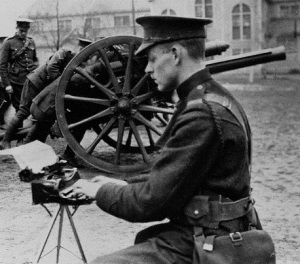 For almost eight years I was a newspaper reporter in the Boston-area. During that time my primary beat was law enforcement where I had daily experience with local and state police officers. I had the pleasure of getting to know them, training with them and writing about the job, its mundanity and its darker side. Overlapped during that period was my time writing feature stories about local men and women fighting in Iraq and Afghanistan, further hardening my appreciation for getting the details right. By getting stories and details right I gained the trust and respect of the soldiers and police I covered. That desire for authenticity has been transferred to my military or law enforcement fiction, even if the stories are about Lovecraftian monsters or future technological terrors.
For almost eight years I was a newspaper reporter in the Boston-area. During that time my primary beat was law enforcement where I had daily experience with local and state police officers. I had the pleasure of getting to know them, training with them and writing about the job, its mundanity and its darker side. Overlapped during that period was my time writing feature stories about local men and women fighting in Iraq and Afghanistan, further hardening my appreciation for getting the details right. By getting stories and details right I gained the trust and respect of the soldiers and police I covered. That desire for authenticity has been transferred to my military or law enforcement fiction, even if the stories are about Lovecraftian monsters or future technological terrors.
Here are some basic tips that you might keep in mind when you plunge into the world of military or law enforcement fiction:
Authenticity builds credibility– Authentic language, structure and characters also go a long way to creating credibility in your work. Many authors will read military sci-fi or a techno thriller an mimic the language and jargon, but it often falls short in authenticity. Remember that authenticity builds credibility and fortifies the overall perception of your skill. A famous techno-author was great at ships and jets, but writing unconventional warfare and warriors he was quite lacking, eroding the overall credibility of the story being spun. But this idea of authenticity applies to all genre stories whether they are military, police or medical.
Magazine is not a ‘clip‘- There is a long line of mistakes made by authors when it comes to writing military and law enforcement but nothing is worse than ‘clip.’ Not to get all technical, but a clip is not a magazine. Yes, a clip can hold bullets, as in the M1 Garand’s ‘clip’ which holds rounds in a metal c-shaped clip, but it is not a ‘box’ magazine used in modern pistol or assault weapons. I learned from a police officer the need for credibility and clarity when speaking about ‘clips’ versus magazines. He told me that if he were to go on the witness stand during a legal case and called a magazine a ‘clip’ that would erode his credibility as an expert or authority as ‘clips’ and magazines are not the same thing. Similarly, a device attached to the muzzle of a pistol or rifle may have been called a silencer in the past, but its never called that now. Properly called a suppressor, or in slang as a ‘can’, it is a device that suppresses sound but never completely silences. So if you’re crafting a story of steely eyed professional, he or she should never “put a clip into the silenced rifle.”
Avoid the Slang Cyclone– You may get magazine and suppressor right, but avoid bombarding readers with too much slang. Yes, police communications or platoon leader instructions may be filled with lingo and slang, but recognize that its done with a purpose of brevity not drama. To the untrained ear most jargon or slang becomes gibberish, even if its used correctly. And if your reader knows the jargon and you load a sentence incorrectly then it lessens the credibility. Pepper the work with authentic language or details to keep the story grounded in reality, but ensure it is readable to laymen.
Never use Black Ops– This is a term that had very limited credibility for several decades, but was never the kind of term truly used in intelligence or military circles. Other jargon to avoid- wet works, commando (unless you’re writing a World War II story,) chopper (use helo or bird,) or bullet proof vest (ballistic vest/plate carrier are acceptable modern terms.)
Reference– There is a good quick hit list of slang in an NPR piece on the subject of fiction and jargon. For another list with more slang check out ITS Tactical or pick up a modern military-tactical magazine (the thing you read) for up-to-date gear and its associated language. Another way to understand the mindset or hear the cadence of modern military lingo, check out any number of videos on Youtube. These will give you a sense of character and diversity of modern soldiers, while also showing you the proper operation of many weapons used in stories but never personally handled by authors.
© Copyright site content Asymmetric Creativity/Kevin Cooney (asymmetriccreativity.wordpress.com) 2014-. All rights reserved. Text may not be used without explicit permission.